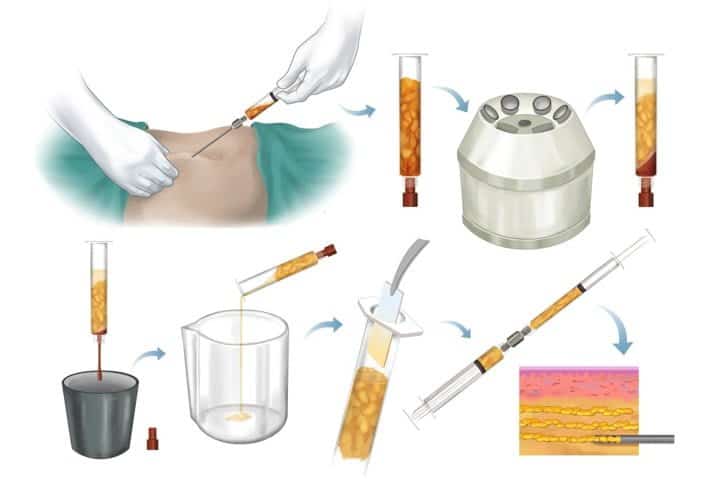Key Takeaways
- Be honest and specific about your aesthetic goals. In doing so, they’ll get a clear picture of your hopes for the Brazilian Butt Lift and improve the accuracy of the surgical procedure.
- Open communication allows you and your surgeon to align surgical techniques with your body type, ensuring realistic outcomes that match your unique anatomy.
- It allows for addressing concerns about the procedure before it is too late, creating a more proactive approach. This shortens anxiety and allows for a more rewarding surgical experience.
- Building a trusting relationship with your surgeon through open dialogue and sharing past experiences can significantly improve surgical outcomes and patient satisfaction.
- By taking the time to reflect on your motivations and ensuring your expectations for your results are realistic, you can help improve your body image and confidence after surgery.
- Good communication is your best tool for a successful surgical experience. When you ask specific questions and give forthright answers, you can lower anxiety levels once surgery is complete.
Open communication with your surgeon is key when considering a Brazilian Butt Lift (BBL). Honest conversations regarding your desired goals will allow you to set realistic expectations and achieve better results.
Open communication is key in making sure the surgeon is aware of your aesthetic goals and can help achieve the results you’re looking for. This collaborative approach gives you the opportunity to raise concerns, address risks, and determine what’s best for your body type.
Through open dialogue, you and your surgeon can establish a level of trust and confidence in the process. In the end, this conversation is the most important step toward getting the best possible results and improving your overall happiness with the process.
Encouraging this open dialogue with your surgeon will be key in ensuring the best possible BBL experience.
Why Discuss Goals with Your Surgeon
1. Clarify Personal Expectations
Discussing your aesthetic goals with your surgeon is an important step before undergoing a Brazilian Butt Lift (BBL). By articulating precisely what you’re looking for, you provide your surgeon with insight into your aesthetic goals. Perhaps you’re seeking a more voluptuous, rounded appearance or natural-looking improvement. The more specific you are, the better your surgeon will be able to customize the procedure to meet your needs.
Perhaps just as important as discussing goals with your surgeon is managing your expectations. If you have a very unique body shape or have had past surgeries that will impact outcomes, it’s best to know this right from the start so you can build a strong foundation. Talking through the fat transfer process, for instance, can help explain how it will help you reach your desired figure. This simple but proactive step will help make sure you and your surgeon aren’t speaking different languages.
2. Align Surgical Techniques with Goals
Your body type has a significant influence on which surgical techniques will be used during your BBL. Discussing your goals with your surgeon can help you uncover augmentation techniques to achieve your desired outcome. Certain techniques may be more advantageous depending on one’s body structure.
Fat grafting techniques are a third key focus. Your surgeon should be able to tell you which types will get you closest to your desired appearance. The role of liposuction needs to be discussed as well. Not only is it about augmentation of the buttocks, but it is also about sculpting other areas to achieve balance and proportion. This holistic perspective furthers your overall aesthetic vision.
3. Address Potential Concerns Early
Addressing any concerns from the beginning helps make the surgical experience more comfortable. Be it in regard to fat absorption risk or fat embolism, open discussion is imperative. Talking about postoperative care beforehand helps to dispel worries about the recovery period.
Understanding your goals during the recovery period is crucial, as you might not be as active or energetic as you’re used to being. Financial conversations are just as critical. Addressing these aspects helps determine if BBL is suitable for you, aligning with your body goals and ensuring a satisfying result.
Building Trust with Your Surgeon
Building a connection with your surgeon is the first step to building trust. Discussing any previous experiences you’ve had with cosmetic procedures helps provide your surgeon with context. It enables them to create a unique plan of action that best fits your situation.
Creating open dialogue helps develop mutual understanding, so you can communicate your aims concisely and feel confident in your path to surgery.
Establish Open Communication Channels
Clear, consistent communication is key before and after surgery. Most importantly, it gives you an opportunity to ask questions and discuss any concerns you may have.
Follow-up visits are a great time to talk about your progress in recovery and what changes may need to happen in your care plan. Foster an open dialogue that allows you and your surgeon to freely exchange information and thoughts.
This method goes a long way in creating a team-based environment where your questions and worries are handled as they arise.
Discuss Past Experiences and Fears
Providing any previous surgeries or cosmetic treatments they should be used to give invaluable context to what you are expecting now. Talk through any anxieties about anesthesia and recovery time so you feel informed and empowered.
Follow-up questions can help clarify any misunderstandings you may have about the BBL process. Addressing all of your questions and concerns will set your expectations to match the surgical experience.
Create a Comfortable Environment
An inviting consultation environment sets the tone for honest conversations about your aesthetic goals and apprehensions. Select a surgeon who puts you at ease to create an environment conducive to open and candid discussion.
A team-oriented approach that welcomes your input makes sure that your goals become part of the surgical blueprint. Do your homework and look up success rates, board certifications, and patient reviews to find a reputable, highly-qualified surgeon.
Such diligence reduces the risk, like the body absorbing 30% to 50% of injected fat.
Preparing Mentally and Emotionally
Reflect on Personal Motivations
Determining your motivation for wanting to get a Brazilian Butt Lift (BBL) should be the first step. Be sure your why is your own and not due to fear of judgment from other people. Recording these motivations is a good way to clear your mind and focus your conversation with your surgeon.
That all ensures that you and your surgeon are on the same page. Enhancing your aesthetic goals often leads to an improved body image and increased confidence. Making bold moves today without any plan for sustained investments in the future would be a tremendous failure.
Set Realistic Expectations for Results
Knowing that results do not happen overnight is very important. Due to the body’s natural healing process, you often can’t see the final result immediately. At times, a level-headed approach, moderation even, is required.
Social media can create an unrealistic picture, so it’s important to prepare to set realistic goals. Prepare yourself mentally and emotionally for the chance of needing follow-up procedures, such as further fat grafting, to achieve your desired appearance. Research indicates that 60% to 80% of the injected fat is still present at six months, which can make a huge difference in the final result.
Consider Psychological Readiness
Assessing your mental state is important before surgery. This helps ensure a positive recovery. Talking about any emotional challenges with your surgeon can help manage expectations.
Engage with others who have gone through similar experiences. Their insights can be valuable. Studies suggest 86% of cosmetic surgery patients feel happier with their appearance afterwards.
Remember, surgery is just one part of overall well-being. Take a few minutes each day to focus on your breath and foster self-acceptance.
Benefits of Open Communication
Having an open dialogue with your experienced plastic surgeon can lead to better surgical outcomes and overall satisfaction. Once you communicate your recovery expectations in detail, your surgeon will be able to customize the butt lift surgery to address your specific goals. This individualized approach drives the best results while ensuring a smooth recovery process.
Improve Surgical Outcomes
Properly communicating with your surgeon is one of the most important factors to ensuring a successful surgery process. Communicate your expectations to your surgeon. This will allow them to better advise you on which techniques will help you achieve your goal and which techniques to avoid.
That partnership can lead to more successful BBL outcomes. The need for clear communication cannot be understated, particularly with complex health issues such as a Brazilian Butt Lift. Meeting your surgeon in advance of surgery day is important. This step helps lay the groundwork for a smooth procedure.
Enhance Patient Satisfaction
When you feel heard and understood by your surgeon, you’re much more likely to be satisfied with the procedure itself. When everyone is on the same page with realistic expectations, it creates a much more satisfying surgical journey.
Inviting feedback from communities during consultations helps make sure your needs are prioritized every step of the way. Patient satisfaction studies indicate that 80% of patients report being happy with their results from a BBL. Meeting patients’ expectations is crucial. The key to patients’ satisfaction is effective communication with their surgeon.

Reduce Post-Surgery Anxiety
Taking time to answer concerns and questions during preoperative visits will have a significant impact on lowering anxiety levels. Knowing what to expect during recovery helps reduce fear of the unknown and anxiety.
Building a strong support system of friends and family will not only provide comforting distractions but help ease anxiety throughout the recovery period. No matter what, do your due diligence in researching clinics and surgeons before traveling for a BBL.
Seek out board-certified surgeons who have performed a high number of Brazilian Butt Lifts.
Tips for Effective Communication
Ask Questions Clearly
When getting ready for a BBL consultation, nothing will help you more than having a list of important questions in mind. These should include information about the surgical procedure, recovery, and likely outcomes. This way, you make sure that the dialogue is more targeted and action-oriented.
Inquiring about the expected timeline for recovery allows you to prepare for your post-operative care appropriately. You can create a comfortable healing environment and refrain from sitting on your bottom for a minimum of two weeks. Having a back-and-forth discussion gives your surgeon the chance to give you nuanced, in-depth answers, which will arm you with information and confidence.
Share Honest Feedback
Good and honest communication with your surgeon will help ensure that your goals are well understood and appropriately addressed by your surgical plan. Being open about your concerns and hopes sets the stage for a discussion that covers all bases, including addressing fears and setting realistic expectations.
If you’re not comfortable with something, talking through these discomforts will help guarantee that your interests are protected. If you’re worried about the risks, tell us what you are afraid of. Taking the time to do so can initiate a meaningful dialogue about likely results and key safety steps, like stopping smoking at least six weeks prior to and after surgery to improve your recovery.
Use Visual Aids for Clarity
Carrying photos or illustrations of what you want to achieve to your design consultations goes a long way toward improving communication. Visualizations help make your aesthetic goals tangible. They help your surgeon better understand your expectations for the BBL.
Engaging in conversations about how these tools can help you address your expectations is critical. Computer imaging technology is a valuable tool for visualizing your ideal result and understanding what’s realistic to expect. Most importantly, it helps make sure you and your surgeon are on the same page about your goals.
Conclusion
Your overall experience—and your ultimate results—will be improved if you’re completely open with your surgeon about what you hope to achieve. Honest conversation and open discussion can alleviate all of your concerns and misconceptions and put you on a smooth path toward your goal. Most importantly, you gain a partner in your journey—someone who knows your hopes and concerns. This way you create trust between you and your surgeon and you feel more comfortable. It’s more than surgery—it’s about feeling heard and confident throughout the entire process. So, have this discussion sooner than later. Give your surgeon an idea of what’s most important to you. It’s your body, your future, and you deserve to have your voice heard. If you’re ready to make that leap yourself, reach out and make your consultation count. Your goals should drive the decision, and your voice should help to shape it.
Frequently Asked Questions
Why is it important to discuss goals with your surgeon?
Getting on the same page with your goals allows your experienced surgeon to fully understand your vision. Open communication goes a long way in avoiding misunderstanding and establishing recovery expectations, which is incredibly important in achieving the best butt lift surgery outcome.
How does open communication build trust with your surgeon?
Open dialogue encourages an honest relationship of trust, which is essential when considering surgery. It helps you identify what you should be asking, ensuring you feel confident in your experienced surgeon’s skills.
What mental preparations should I consider before surgery?
Do your part to prepare for the butt lift surgery by having realistic expectations and knowledge about the procedure. Being mentally prepared will minimize anxiety and lead to higher satisfaction with the results after this cosmetic procedure. Understand what’s realistic in terms of change.
What are the benefits of open communication with your surgeon?
Benefits of personalized care are tailored to your needs and desires, especially when considering surgery like butt lift surgery. Open communication ensures that your experienced surgeon’s skills align with your goals for a successful procedure.
How can effective communication impact your BBL results?
Honest, clear communication with experienced surgeons will help you achieve your goals. It ensures there is agreement between what you wish to achieve and what the cosmetic surgery procedures will provide, reducing disappointment and increasing happiness with the recovery experience.
What tips can help improve communication with your surgeon?
Be open and candid with your experienced surgeon about your goals regarding cosmetic surgery procedures. Don’t hesitate to ask questions and seek clarification. Bringing specific visual examples can enhance communication, ensuring that your wishes for a successful procedure are fulfilled.
Why should you prepare emotionally for a BBL?
Being emotionally prepared for your cosmetic surgery procedures will ensure you have realistic expectations and a smoother recovery experience. Understanding the emotional process helps you to adjust after the butt lift surgery.











